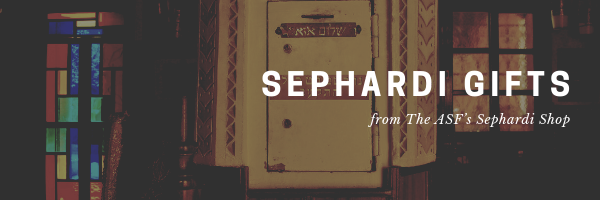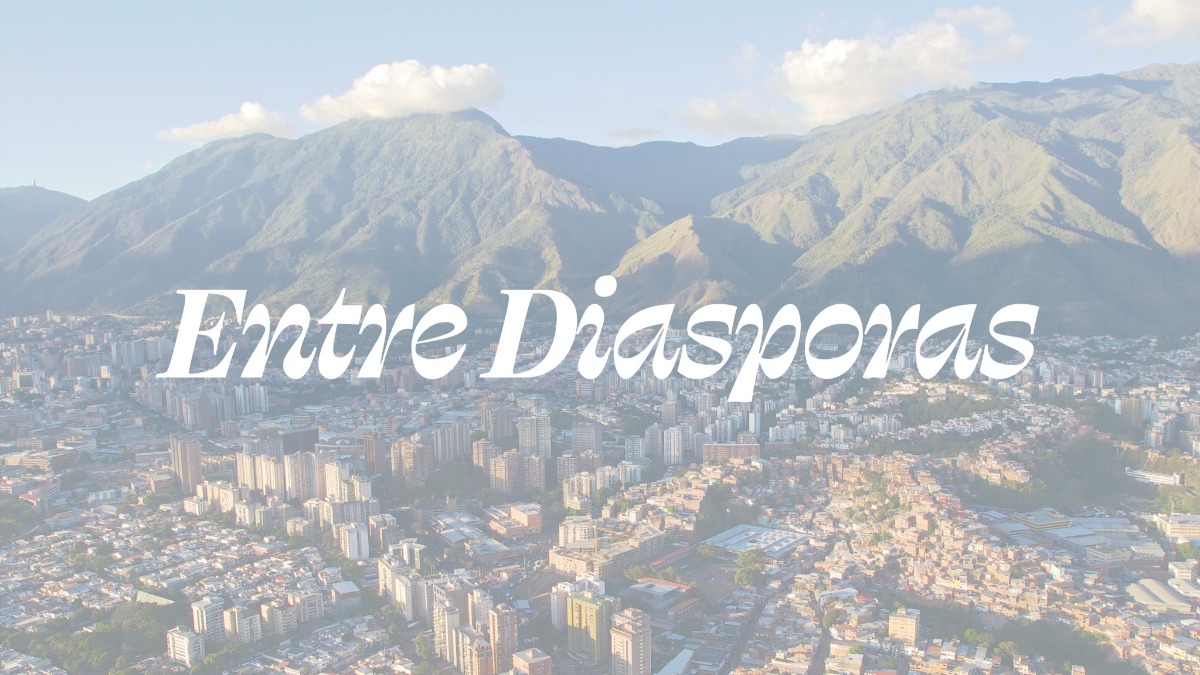Mazal tov/Mabrouk to Donald Zilkha on receiving the Legion d’Honneur, which was recently presented by France’s Consul General in NY Jérémie Robert
Click here to dedicate a future issue in honor or memory of a loved one
✡️“The Sassoons are having a moment. Here’s why that matters”
By Sasha Goldstein-Sabbah, The Jerusalem Post
Professor Sasha Goldstein-Sabbah with “Reclaiming Identity: Jews of Arab Lands and Iran Share Stories of Identity, Struggle, and Redemption,” 30 November 2021
(Screenshot courtesy of ASF IJE/Youtube)
The Sephardi Ideas Monthly (SIM) in recent months has been tracing the outsized influence of Baghdadi Jewry on Jewish life in South and East Asia. Indeed, the Baghdadi influence is so great that it has transcended the Jewish community, and one issue of SIM even explored how the rooted cosmopolitanism of the Baghdadi Sassoons of Shanghai inspired a young Chinese-born and London-based writer’s Oxford MA thesis. The ASF’s Director of Publications, Dr. Aryeh Tepper, likewise recently explored the rooted cosmopolitanism of the Shanghai Baghdadis in the Tel Aviv Review of Books. Dr. Sasha Goldstein-Sabbah is a leading scholar of the transnational Iraqi Jewish networks in South and East Asia, and in this recent contribution to JTA, she notes how “the Sassoons are having a moment.” Among the aspects of this moment is “the current exhibit at the Jewish Museum in New York, titled “‘The Sassoons.’” Aligning with Wang’s response and Tepper’s essay, but from within a very different context, Goldstein-Sabbah encourages visitors to the exhibit to “pay special attention to the dual cosmopolitan and communal approach to Jewish history that is exemplified by many of the pieces on display.”
~~~~~~~
Feature: The ASF’s Institute of Jewish Experience Presents Unity Through Diversity✨🤝
In honor of Jewish American Heritage Month, the ASF’s Institute of Jewish Experience (IJE) recently brought together an all-star line-up of communal leaders, artists, activists, rabbinic scholars, and educators to explore the various tastes, melodies, and histories that constitute the beautiful mosaic of the Jewish people. Or to use a different metaphor, in the words of the IJE’s Content Manager, Dalya Arussi de Veroli, “the multiple strands are what makes the rope stronger.” This year’s Unity Though Diversity shined a spotlight on the binding force of Shabbat. Whether it’s chulent, hamin, kubbanneh, oriza, salmorejo, hraimeh, or any other festive meal you make, shabbat holds a special place in the Jewish world.This week’s video feature is a four-minute Introduction into the IJE’s recent celebration of the multiple strands of contemporary Jewish life.
Our program partners included: the Conference of Presidents of Major American Jewish Organizations, World Jewish Congress, Embassy of Israel to the United States, Congregation Mikveh Israel, World Zionist Organization, E’eleh BeTamar, Yeshiva University, Union des Juifs d’Egypte en Israel, Arevot, Sephardic Legacy Series, Instituto Da Musica Judaica Brasil, 9th Street, American Jewish Historical Society, OneTable, COJECO, Sephardi Mizrahi Q Network, Hebrew Union College Institute of Religion: Jewish Language Project, The Lookstein Center for Jewish Education, Weitzman National Museum of American Jewish History, Center for Jewish History, Spanish & Portuguese Synagogue of Montreal, Harif: Association of Jews from the MENA, Gesher, SAMi: Sephardic American Mizrahi Initiative, & Degel Yehudah
~~~~~~~
📖“Emunat Hakhamim: Surrender or Challenge?”
By Rabbi Dr. Marc Angel, The Institute of Jewish Ideas and Ideals
A chart of Sephardi and Ashkenazi Sages, Fez, Morocco
(Photo courtesy of Mr. Elie Devico, A”H, who permitted the ASF and Mimouna Association to explore an incredible collection of community records), 5 August 2021
R’Marc Angel examines the notion of emunat hakhamin, “faith in the sages” that demands that we “suppress our own minds” in favor of what the sages say, even when evidently unreasonable, and that “has gained traction within Orthodox Judaism in recent decades.” In response to this narrow-minded approach, R’Angel quotes the great scholar and Rosh Yeshiva, Rabbi Nachum Rabinovich, in asserting that “‘We are expected to respect the wisdom of our sages, but not to assume their infallibility or their quasi-prophetic status.’” R’Angel then adds some common sense: many Torah scholars “may have expertise in Talmud, but have little or no general knowledge in science, medicine, politics, economics, literature, history etc. Why should people be expected to trust narrowly educated men to pass judgment in areas where they have no particular expertise?” Of course, as the ASF’s 1st President Dr. Daniel Elazar noted, Classic Sephardic education entailed a “worldly and cosmopolitan yet seriously Jewish” curriculum featuring: “Jewish history and thought, languages, sciences and general education, as well as rabbinical studies.”
~~~~~~~
2008, Aluminum Cast
Sculpted by renowned Baghdad-born artist Oded Halahmy
My Life and Work: Chanukah Lamps
By Oded Halahmy
The Hebrew word Hanukkah means "dedication" and symbolizes freedom; Oded Halahmy has dedicated himself to honoring his Jewish roots and culture through artwork related especially to this holiday.
Oded once hosted a holiday party and invited many friends to light Hanukkah candles. Every year since, he has kept up the tradition of making a new Hanukkah lamp.
Over the years, other ancient Middle Eastern symbols from Oded's Iraqi heritage began to appear in his lamps: the pomegranate, Hamsa (hand), lion, palm tree, palm frond, crown, and horseshoe.
~~~~~~~
Upcoming Events or Opportunities
ASF’s Institute of Jewish Experience presents:
Living the Parsha with Mati Seri
Join us for a discussion of actor, singer, presenter and author Mati Seri’s new book “52 Weeks of Devotion” on the weekly Torah portion. The presentation will be accompanied by musical interludes by the singer.
Sunday, 25 June at 12:00 PM EDT
(Complimentary RSVP)
Sign-up Now!
Sponsorship opportunities available:
~~~~~~~
ASF’s Institute of Jewish Experience presents:
Houses of Life:
Synagogues and Cemeteries in Italy
We invite you to a virtual tour of an exhibit currently on display at MEIS - the National Museum of Italian Judaism and the Shoah.
Curated by Andrea Morpurgo and Amedeo Spagnoletto, this exhibit offers an innovative in-depth approach focusing on the architecture, rituals, and the roles played by both synagogues and Jewish cemeteries in the Jewish community. Visitors will explore the specifically Italian nature of these two places, while understanding the over two thousand years of history of the country’s Jewish community.
The history of cities and of human beings intertwine in the exhibit, through their original architecture, artifacts that are passed down in and between families, and are on display. Among these are prestigious loans such as the Aron ha-Qodesh, the holy Ark, of the Vercelli Jewish Community and many precious documents from both State Archives and Italian Jewish Communities.
Monday, 26 June at 12:00 PM EDT
(Complimentary RSVP)
Sign-up Now!
About the curators:
Andrea Morpurgo is an architect and architectural historian. He graduated from the Istituto Universitario di Architettura di Venezia, then moved to the Netherlands where he earned a Master of Excellence in Architecture at the Berlage Institute in Rotterdam and later a PhD in History of Architecture and Urban Planning at the Polytechnic of Turin. He is author of the book “The Jewish Cemetery in Italy: History and architecture of an identity space” (Quodlibet), professor of the “Synagogal Architecture” course of the three-year University Diploma in Jewish Studies promoted by the Union of Italian Jewish Communities, and member of the board of the “Foundation for Jewish Cultural Heritage in Italy”.
Amedeo Spagnoletto is the Director of the National Museum of Italian Judaism and the Shoah. He is also a sofer, a Jewish ritual scribe. From 2017 until 2019 he was Chief Rabbi of the Jewish Community of Florence. From 2011 until 2019 he was teacher of Jewish Law Principles, Exegesis and Bible, in the Jewish Studies Degree of the Union of Italian Jewish Communities.
Sponsorship opportunities available:
~~~~~~~
ASF Broome & Allen & ADL Collaborative for Change Fellow Isaac de Castro presents:
Entre Diasporas: Telling the Latin-American Jewish story. Contando la historia judía latinoamericana
Tell your story. Cuenta tu historia.
We’re looking for first-generation Latino Jews in the United States who immigrated because of political and social turmoil. Jews of Sephardic descent from Colombia, Cuba, and Venezuela that now reside in the Miami area will be given priority, but others are welcome to apply as well.
Fill out this form to be considered as an interviewee for this project. After you’ve submitted, we will be in touch promptly to set up a preliminary phone call.
Click here for more information.








